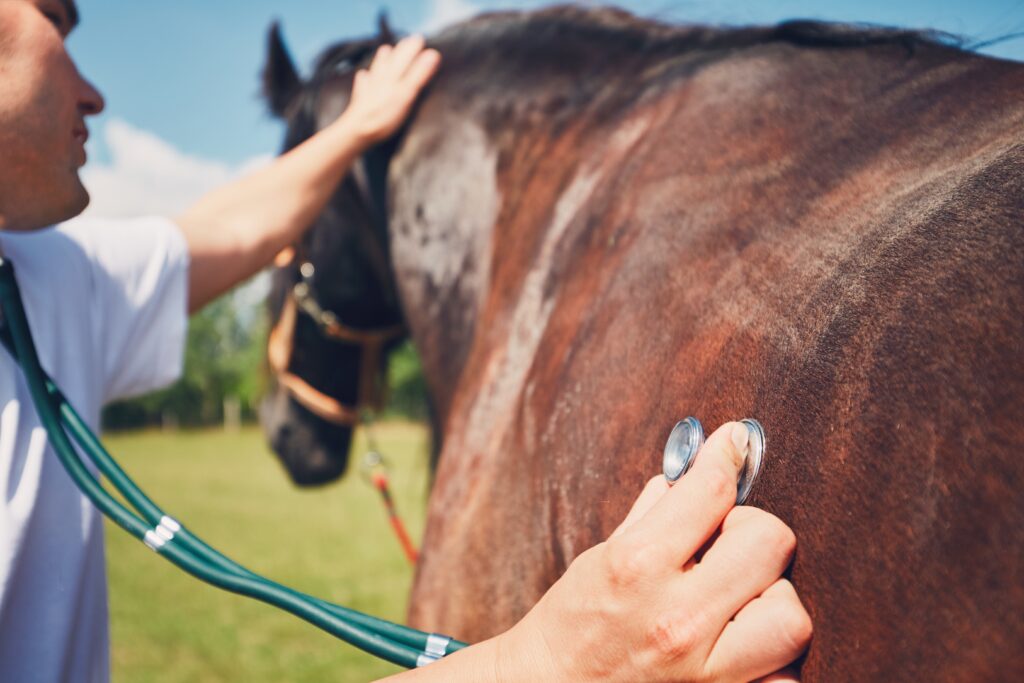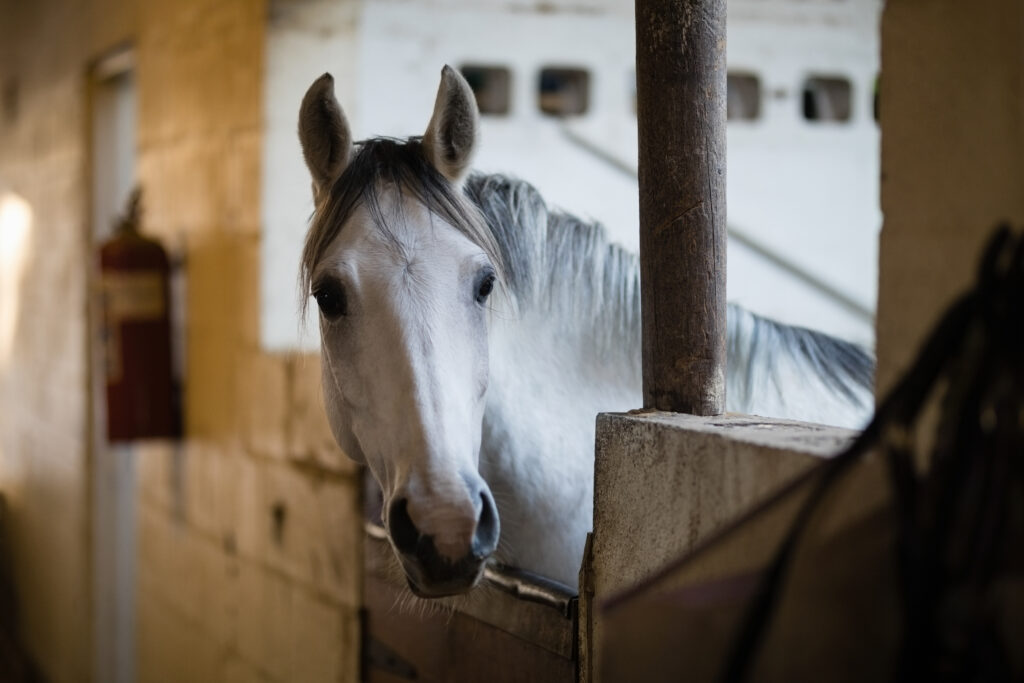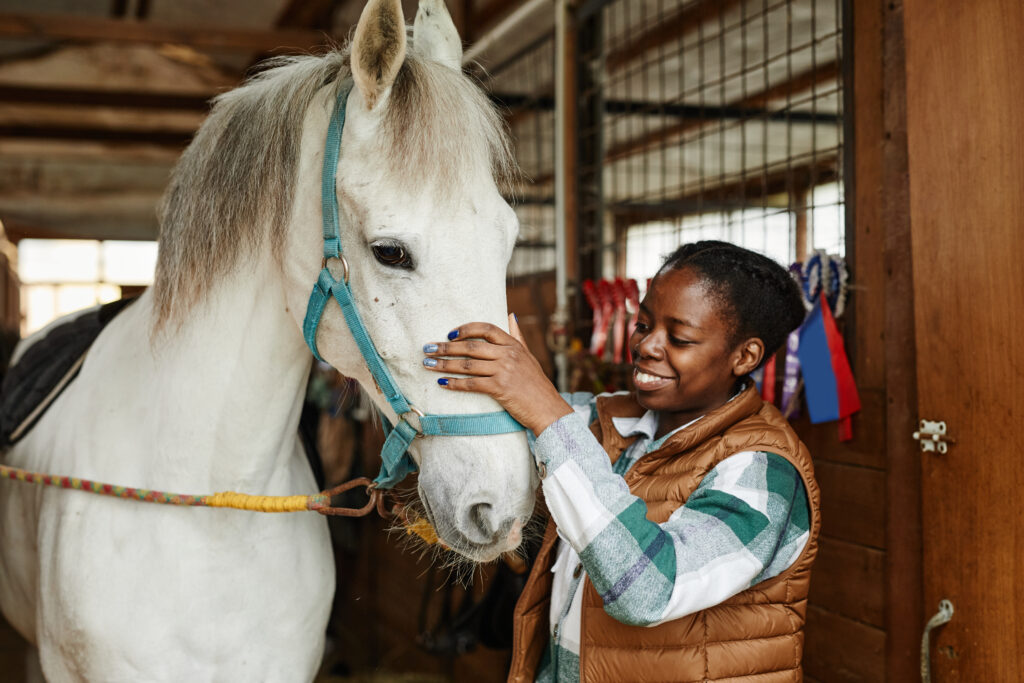
Are your horses suffering from an infection? Let’s take a moment to learn the fungal infections in horses, how to identify and what to do about them.
There are vast species of fungus in the environment, but a few cause infections. The falling victim can happen through inhalation, ingestion, or through the skin from an open wound or cut.
Fungal infections can target healthy animals or creatures incapacitated or immunocompromised - poor nutrition, viral infections, or cancer - to successfully infect.

Lengthy use of antimicrobial drugs or immunosuppressive agents has some influence on the development of certain fungal infections.
The virus may be localized (systemic) or affect the entire body (generalized).
Is part of the Aspergillus species, which consists of 837 species of fungi. Primary a respiratory infection that may become generalized. Although aspergillosis has no boundaries - worldwide and among domestic & wild animals - its grip varies among species.
In the case of horses, the most common is fungal disease targetting the guttural pouch. Two guttural pouches (sacs) form by the auditory tube - which connects the middle ear with the back of the throat [1].
The virus occurs in 1 guttural pouch. Its symptoms are
This disease can escalate to fatality when the infection spreads to the lungs. Inflammation of the intestine predisposes to the weakening of the immune system of the horse.
Afterward, through a disrupted lining of the intestines, Aspergillus invades. As this occurs, physical coordination is dysfunctional and visual disturbances rise - including blindness - when the infection expands to the brain and optic nerve.
Topical and oral antifungal promoters are effective ways to treat Aspergillus infection.
Surgery to expose and remove fungal material is one way to treat guttural pouch mycosis in horses. Horses may survive, but their recovery won’t be guaranteed, considering if the nerves are damaged.
This fungal disease affects the mucous membranes and the skin.
Although this type of infection is rare in horses. Candida species may cause arthritis in horses.
Symptoms vary and are nonspecific. But you may treat (oral or skin candidiasis) with an ointment or topical application.
Other recommendations by your veterinarian may include drugs administered through the mouth or the vein to combat arthritis induced by Candida fumata infection in a horse.

Coccidioides immitis fungus causes Coccidioidomycosis - dust-borne & noncontagious infection.
Found in dry, desert regions of the southwestern United States and similar areas of Mexico and Central & South America.
Dust particles often carry fungal spores, and the only entry of the infection is through inhalation.
A plague wave occurs when dust storms form after rainy periods followed by drought.
In horses, the indications of contamination are
Sight the fungus in body tissue to confirm a diagnosis. This virus varies with few or no signs of progressive, disseminated, and fatal forms.
Treating Coccidioidomycosis may resolve without remedy. But if chronic respiratory symptoms or multisystemic disease are present, a prolonged antifungal treatment is required.
There is no further prevention other than avoiding your horse’s exposure to desert soil and dust in areas where the fungus inhabits.
Beware of the fungus Histoplasma farciminosum. An infection limited to horses, donkeys, and at times, mules. But worry little, it occurs in Asian and Mediterranean areas.
This disease attacks the anatomy of the horse by
Nodules may develop under the skin, forgoing cycles of granulation and partial healing followed by a reawakened eruption. Lesions are visible on
Confirming diagnosis requires a microscopic examination to inspect the discharge of the infected area.
There is no satisfactory treatment. There are two routes, removing the lesions surgically and administering antifungal drugs or a mandatory termination of the affected horse.
It is not a true fungus but a water mold. During the fall and winter months, this infection populates in the warmer zones of the United States.
Horses are mainly affected, but dogs - rarely, cats & people - can also be contaminated.
Infection can affect the lower legs, abdomen, and chest but may occur anywhere on the body, inside the skin. The characteristics are circular nodules or areas of swelling that, when open, drain sores. It also produces an intense itch that horses may mutilate the wound if not monitored.
From there, the virus spreads to the lymph system: the lymph nodes, bones, and lungs.

Sometimes the gastrointestinal disease may be unaccompanied by signs of generalized illness in horses.
To identify the disease, distinguish the virus based on appearance and affirm by recognizing the organism in infected tissues.
Treating Pythiosis may require
Timely identification may lead to a better recovery. Factors that influence recuperation are the size & location of lesions and the length of the infection.
Is a sporadic chronic disease caused by Sporothrix schenckii. The organism inhabits soil, vegetation, and timber all over the world. In the United States, it resides in coastal regions and river valleys.
Contamination happens when the organism enters through skin wounds via contact with plants, soil, or penetration of foreign objects - a sharp branch. Animal-to-human transmission may occur.
The virus may remain in the site of entry (the skin) or move to nearby lymph nodes.
Nodules - small and firm - may develop at the site of infection.
Although initial symptoms aren’t visible, chronic illness may result in
In rare situations, the virus can spread through the bloodstream or tissue from the infected entry to
For proper diagnosis, samples may be necessary to culture and examine with a microscope to find atypical appearance yeasts.
Usually, it is a long-term treatment with antifungal drugs. A solution of potassium iodide - by mouth - may be successful. Monitoring the horse for signs of iodide toxicity is needed.
Follow a strict hygiene protocol since it is a contagious disease to humans.
Zygomycosis is the term used to describe infection with fungi in the class Zygomycetes and 2 genera in the order Entomophthorales (Basidiobolus and Conidiobolus).
These fungi are from natural environments and are present in soil and decaying vegetation.
True Zygomysosis infections are rare. Basidiobolus & Conidiobolus are more common and provoke lesions similar to pythiosis.
Both basidiobolus & conidiobolus infect the lining of the mouth, nasal passages, and tissue beneath the skin of horses. Basidiobolus may affect the sides of the head, neck, and body.
Ulcers or nodular may develop in the mucous membrane of the nostril or mouth - blocking the passage. Basidiobolus attacks the skin of the upper body. Large nodules may form that are typically single, circular, ulcerative, and itchy. It may also extend to nearby lymph nodes, causing swollen nodes and focused yellow areas of dead cells.
Signs alone cannot determine the diagnosis of zygomycosis. A microscopic examination of tissues is required to identify the cause of the lesions.
Treatment may be surgical removal, antifungal drugs, medication to improve immune system response or a combination.

Our products provide health to the skin and coat of your pet animal. Treat skin issues with premium products. Natural ingredients will protect your companion animal. Visit our store!
Did you know Zinc is a natural insect repellent?
Provide comfort to itchy, irritated skin and bring health to hair loss and red spots.
Your pet will feel and look fantastic!
Trust our solutions with minerals and vitamins to guarantee health!
Seek your veterinarian for further information on fungal treatment for horses.



